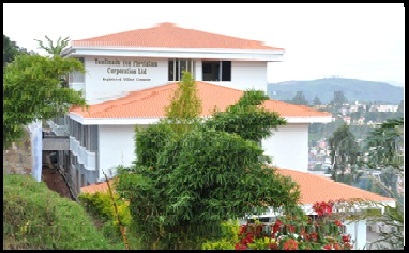
TANTEA has an interesting back story. Back in the 1800s, there arrived a Scotsman, Gragham William McIvor, who was a gardener at London’s Kew Gardens. He was appointed Superintendent of the Ootacamund Botanical Gardens in 1848. [Ootacamund or Ooty is the main town in the Nilgiris. McIvor is credited with successfully acclimatizing cinchona to India and ensuring a thriving production of it. This is of enormous significance because quinine used in the treatment of malaria is extracted from cinchona
Now, McIvor needed labor for his cinchona plantation at Naduvattam and that was a challenge as there were not enough people available locally. So, he wrote to the British government and asked that 500 convicts be sent to work with him here. It took a year for the necessary sanctions but it led to the construction of the jail at Naduvattam.
In 1876, McIvor died in Ooty. His cinchona plants continue to grow wild around here. In the late 1950s tensions between the Tamils and Sinhalese in neighboring Sri Lanka erupted and several Tamils had to flee the country. They arrived in Tamil Nadu where in 1968, the government implemented the Government Tea Project. Under this, the now exiled Tamils were rehabilitated with jobs and a living at the tea gardens.
Behind that cup of tea is a story that goes back to 1968 — when the Tamil Nadu Government started the Government Tea Project to rehabilitate Srilankan Tamil repatriates. The project came under corporate management in 1976 and was re-named Tamilnadu Tea Plantation Corporation. It began clonal tea-planting on land leased from the Government and ended up being the largest tea-holder in the State with six modern tea factories and an employee headcount of more than 4,800. You can get a cup of hot tea at other TANTEA outlets in Guindy Park, Mylapore tank, Vandalur Zoo, Royapettah/Rajiv Gandhi Hospitals and Tidel Park. Tea is also sold in a variety of packs, like kurinji (dust) and green tea for brewing, and cardamom/masala/ginger for dipping. “The tea is truly exceptional,”
TANTEA was started as a socio-economic project. Most of the tea is sold through auction, and the remaining goes out through private/bulk and retail sales. Auction is subject to price yo-yos, and revenue plummets They include opening outlets in big cities, at railway stations, including packs in the PDS and marketing wooden gift boxes of all dip teas. Not all tea estates in India are a throwback to the colonial days. It is similar to the Dooars or Terai in the Darjeeling belt – flat lowlands uphill-Gudalur is at an altitude of 1000m.